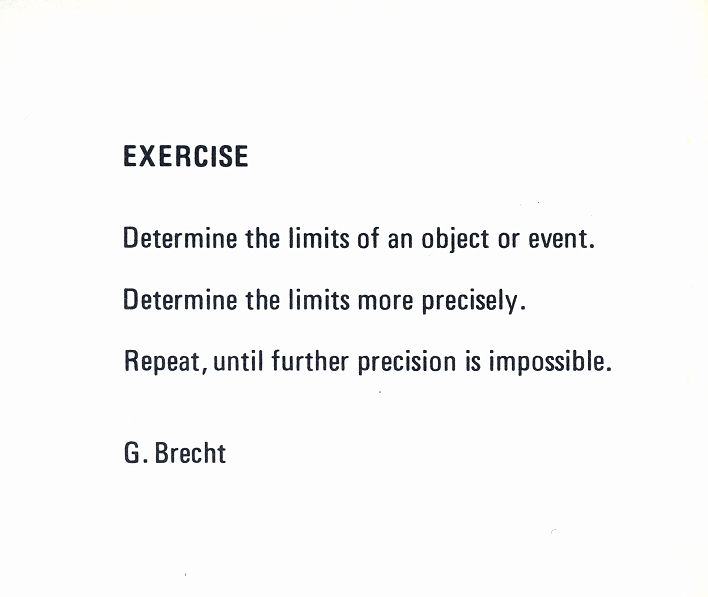For my new topic in Temporary Expert, I’d like to investigate event scores. I had come into the class with this in mind, but my investigations into Junk DNA lead me into a shared territory. In the attempt to interrogate DNA (junk or otherwise), I wanted to sonify the data. However, this sonification is just a procedural mapping determined by the user. It is subjectively useful from moment to moment and user to user depending on intent. Same for designations of “junk”.
Creating this translation of nucleotides to notes is an act of translation, or “mapping”. The instructions for doing so could look like this:
For nucleotide G, play note G,
For nucleotide A, play note A,
For nucleotide T, 50% chance of playing note F vs. F (octave lower)
For nucleotide C, play note C (octave lower)
The writing of this instruction set could also be described as an event score. This was an approach used by George Brecht, Alison Knowles and others affiliated with the Fluxus movement of art that was pioneered in the 1960s.
It also reads a bit like pseudo-code that one might write out in preparation for creating a computer program. This winds up being true of many event scores because of their imperative sentence structure. Though not all even scores are written as concrete instructions. Some are intended to be interpreted by the performer, such as Brecht’s Three Yellow Events (1961):
1 yellow yellow yellow
2 yellow loud
3 red
However, even in these cases the intent was to think of this as a score for performance, even if subjective.
We can see artistic inspiration for creative coding in other places, as well. Sol LeWitt’s wall drawings have instructions for how they are drawn that reads extremely similar as something like a nicely conceived Processing sketch. Or, that is to say, the art actually is the instructions themselves. This allows them to live after LeWitt, while still being manifested in places like Dia Beacon.
My hopes for the rest of the semester is to learn about event scores and similar instructional based procedural art and re-approach them from the cultural vantage point of creative technologists. While procedural and generative approaches are not new in this field, I’m hoping that taking the ethos of play, irreverence, and public engagement of the Fluxus could provide a new methodology for my practice and perhaps inspire the practice of others.
Computers can faithfully interpret our commands (if we express them in a language they understand). However, my early readings on Fluxus talk of a kind of engagement with “the street”, and human to human connection. How do we bring this to tech art? How do we make meaningful events, even if they are events like onClick()?
Brecht’s Three Gap Events has inspired me lately:

What is the Three Gap Events of the 21st century?
I’ve managed to find a rather large Fluxus Event Score workbook pdf that will be of great use, and a good preliminary resource on Fluxus history from the MIT Press.
And perhaps a little motivation for myself:


this is exciting.
the question “What is the Three Gap Events of the 21st century?”
can’t be answered in one go. try employing the instruction about precision to get there:)
or squint at the problem a lot a lot.